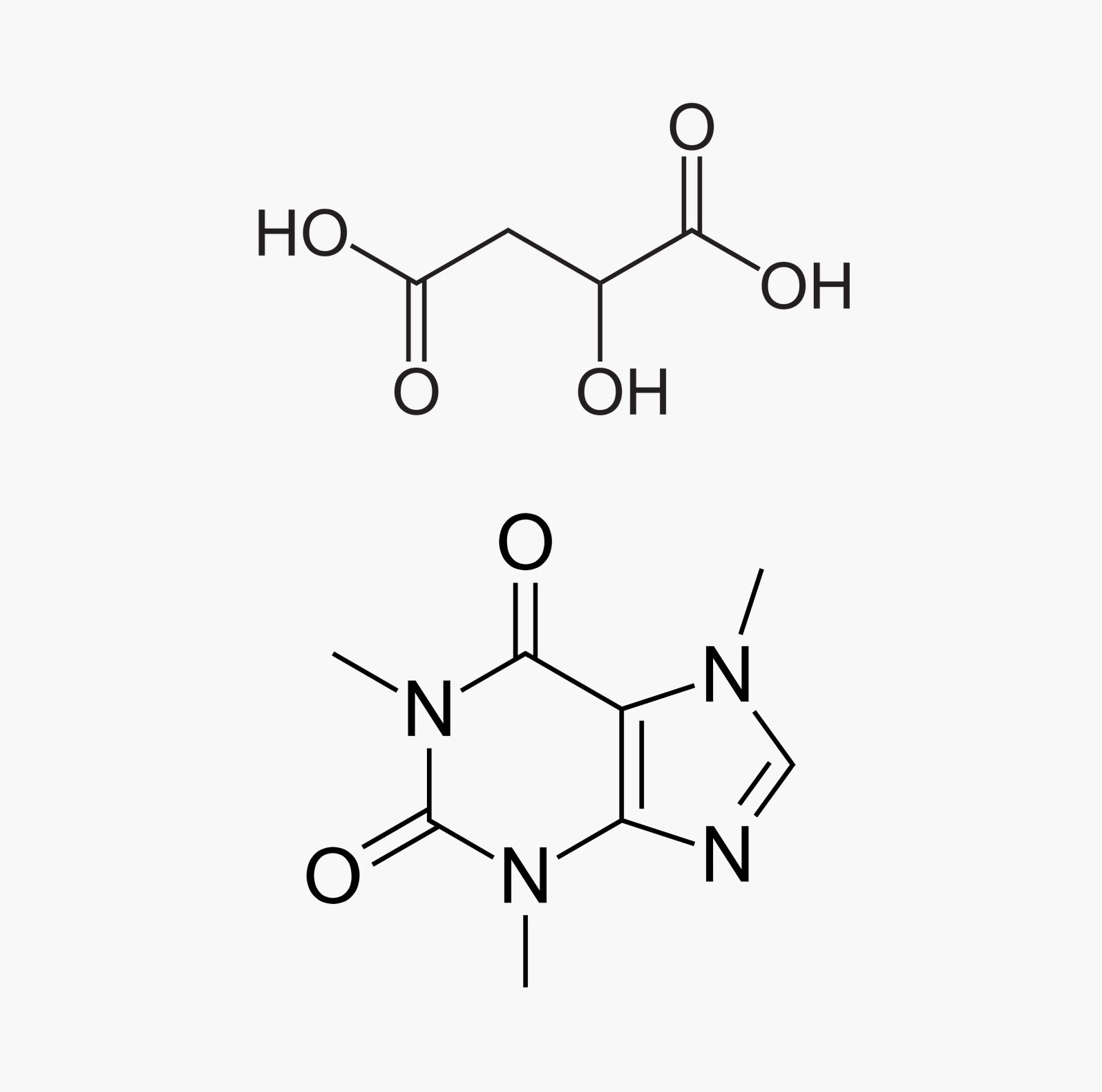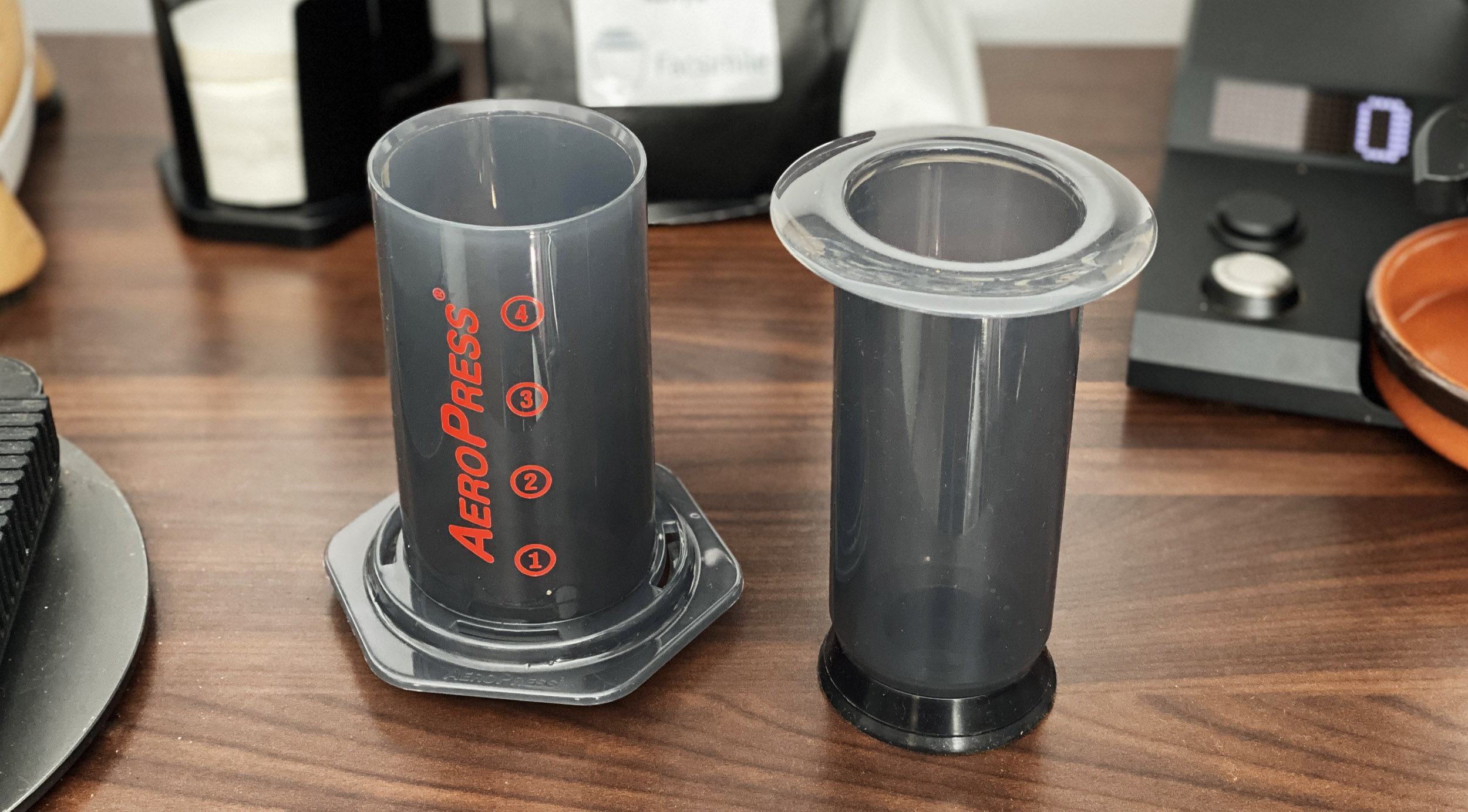by Jonathan Gagne
Some of Jame Hoffmann’s late videos on the topic of the AeroPress have stirred a lot of discussion around this particular brewer. I highly recommend watching all three of his videos, because the tests and discussions he presented are of a very high quality. It is extremely rare for me to land on such a deep discussion about any coffee brewing method without having major reservations about some of the claims being made; here, everything James claimed and concluded fits with my current understanding about the physics of coffee brewing.
Here are links to the videos in question by James Hoffmann:
Part 1 – The AeroPress
Part 2 – Understanding the AeroPress
Part 3 – The Ultimate AeroPress Technique
While I have enjoyed the AeroPress a lot in the past especially when travelling, I have always had one big complaint about it: getting a thick coffee bed to minimize uneven flow when pressing out the water limits the brew ratios that can be used. For example, using a 18 grams dose limits the ratio to about 1:14, given that only 260 mL of water can fit through the remaining space of the AeroPress chamber (you can fit a bit more water if you let some drip out while you pour).
Because of this, most AeroPress brews I had enjoyed in the past had flavor profiles that I found typical of under extracted coffee, which in the case of light-roasted coffee emphasizes bright حموضة but often lacks sweetness. Jame’s videos made me think about the AeroPress brewer again at a particular moment where I happened to be discussing a recent paper about very long immersion brews by the UC Davis team with coffee scientist Samo Smrke. In the paper, scientists brewed several immersions with hour-long steep times, and showed that the average extraction yields calculated in a way that is a bit analogous to the immersion equation depended only very weakly on the brew ratio. This appears surprising because we often brew coffee with much shorter brew times, where the solubles retained inside the coffee grounds have a different profile from those that leaked from the coffee particles into the خليط القهوة.
This caused me to reevaluate my issue with the AeroPress and made me want to try brewing for much longer steep times. The thought is the following: if we can get the coffee particles and خليط القهوة much closer to equilibrium, the chemical profile inside the coffee particles will become much more similar to that of the خليط القهوة. In other words, the flavor profile of the brew will become similar to what one would get with a percolation that approaches full extraction, except for some wasted concentrated coffee that will remain entrapped inside the coffee particles. In the case of a percolation, the continued addition of clean water would allow us to leave the coffee particles filled with cleaner water, i.e., with less good stuff left behind. The big advantage of AeroPress, however, is that it is much easier to agitate the خليط القهوة and get a very even contact between the water and coffee particles.
There is also another point that James made in his videos which I had never heard before, about there being a double-humped preference in terms of brew temperatures. He mentioned that most baristas seem to enjoy light-roasted beans with brew temperatures of about 80°C and then above 90°C, with a valley of less-preferred temperatures in between. In the past I had only brewed a few times with boiling water in the AeroPress, and I did not like the results and never went above 90°C again. I thought that the very good thermal insulation of the AeroPress was probably the reason why I was experiencing this ceiling in preferable brew temperatures.
All these thoughts pushed me to try AeroPress brews with 99°C water and 10 minutes- long brew times, something I had never considered before. The only reason I did not go for 100°C exactly is that this would destabilize the stream of my Fellow gooseneck kettle and make the pouring more messy. I was immediately astounded at the extreme
 Malic acid (top) and caffeine (bottom)
(sources: Wikimedia Commonsand PubChem).
Malic acid (top) and caffeine (bottom)
(sources: Wikimedia Commonsand PubChem).
sweetness this gave me in the cup, and I therefore decided to experiment more and land on a repeatable recipe that would give me the most out of a coffee. James Hoffmann seemed to experience only a slight improvement between two and four- minute brews, but this could related roast level, grind size or just preference. While I agree with James that 10-minutes brews are not desirable in a cafe environment, I am absolutely willing to pay that price at home for the kind of quality increase I have experienced.




0 تعليق